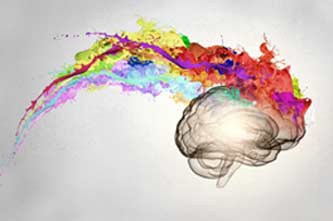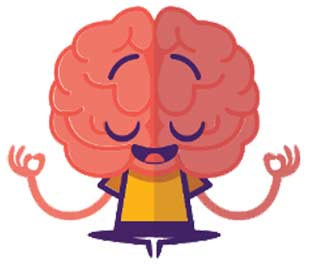
Insight
April 27, 2025
The following text is from my Q&A booklet and was sent to me by a friend with a question.
"On a deeper level meditation works by investigating and understanding the nature of the mind itself. It is seen as a condition in nature, devoid of any solid personality or lasting quality. When this insight arises one can be peaceful with the most horrific mind states; one doesn’t take it all so personally".
Their question...
"How do I encourage a deeper level of concentration so this insight can arise?"
My reply was written at Vimutti monastery. I had arranged to stay there over Easter weekend as part of a northern wandering and the time coincided with the arrival of cyclone Tam so there was time to spare and the text ended up longer than I had originally planned.
...
Insight is seeing into, understanding, having knowledge of dhamma. Concentration is defined canonically as the jhanas and they are usually regarded as states of absorption. The definition of dhamma-terms brings many opinions, which I won't discuss, but I would very much recommend reading this analysis of jhana by Ayasama Kumara. 
My thoughts here are more from a personal, practice perspective and are based on the consideration of two factors: context and view. The first relates to our situation, our environment, our lifestyle, etc. – our dimension generally but particularly in the mind. And the second relates to our conceptual compass, our vision, outlook, goal, etc. For example, if I wanted to make a table, I would go into the workshop (context) and look for, muse on, tools and wood (view). If I wanted to get enlightened, to have insight, where would I go and what would I look for? Very simply, I would go to a quiet place and look for silence. I would listen. The mind that is listening is non-constructive it is receptive, still, stable, composed, poised... and I would call this meditation... and I could call this jhana. It is not static, it is dynamic, it is alive.
In the meditation grouping, at the end of the eight-fold path, we have vayama, sati & samadhi – effort, awareness (mindfulness, presence...) & concentration (stability, composure...) I suggest several words as I feel that words have different intentional meaning, nuances that season both our context and, especially, our view. Am I building a table, a bench, a counter, a trestle? Each thought inflects a different perception. Definition helps bring understanding with a well formulated question often containing the answer.
The Satipatthana Sutta starts with the body.
"Breathing in a long breath, one knows (discerns, understands), 'I am breathing in a long breath'..."
And throughout the sutta the emphasis on knowing, discerning, understanding is consistently repeated. And the sutta ends... "This is the direct path for the purification of beings... and for the realisation of Nibbāna — namely, the four foundations (arousings, frames of reference) of awareness."
In the Ānāpānasati Sutta MN 118 the process is extended: mindfulness > seven factors of enlightenment > liberation.
To have clear, undistracted knowing requires a mind that is balanced and composed; this is the context, the stable space; the workshop. The view is the knowing, the insight. (Explore the first factor of the eight-fold path, samma ditthi). In the table analogy, having entered the workshop, we select appropriate tools with a clear understanding of relationships: leg, rails, top... Words again, but I enjoy musing on perception, which sees, and apperception, which understands. My general thought is that samadhi provides context and sati (supports) view. Samadhi is the laboratory and sati is, together, the elements, their fluid mixing and, primarily, the observation of the process. Being in the body... "Breathing in a long breath..." there is clear knowing, observation.
I think the original question needs revision. Perhaps, "what are the causes for the arising of insight?" For context, find a room or place that is tidy, clean, quiet where you can rest uninterrupted for a period of time. Use objects that can form a shrine (in the widest sense of the word) with elements that remind you of or in some way symbolise your goal. Internalise this, not as thinking but as feeling. Relax. And then relax some more. The breath is a useful anchor to the present moment. Too much of meditation is about getting – rather than being.
Thought and thinking are very commonly regarded as an obstacle but it is important to note that these are both present in first jhana. Obsessing against thought is more obstructive than obsessive thought.
Common meditation language sees that: "I am concentrating on the object" or, "I am with or mindful of my breath". I am not on my workshop, nor with or of my workshop. I and my table-to-be, the perception and the apperception of table is all in my workshop, in my mind. Can I be fully relaxed and peaceful with all of that? The expectation of anything else other than what is creates an unreality, a perversion of the truth.
Wood that has perfectly straight grain lacks character, it can be very bland. The beauty in a plank that has twists and convoluted turns shaped by nature can be difficult to bring out but is a joy to behold when we do. Our work is not to overcome, but to refine. Listen to the problem making, the dialogue of wrongess, of lack. Breathing in with awareness is to know that you are alive. Rejoice. Take a caring interest in the grain of the table wood, the timbre of the space that surrounds the content of your current encounter – your mind. It is timeless. It is never right, it is never wrong.
From the Ghosa sutta: AN 2.125-126... "There are two conditions for the arising of right view. The voice of another and appropriate attention (yoniso manasikara)." Dhamma vicaya = investigation, examination, inquiry... of dhamma is the second of the seven factors of enlightenment.
Be still, relax, let go of expectation. With a (relatively) calm mind, listen, take an interest, pay attention, observe. The seeds of dhamma will bring forth the fruits of insight.
